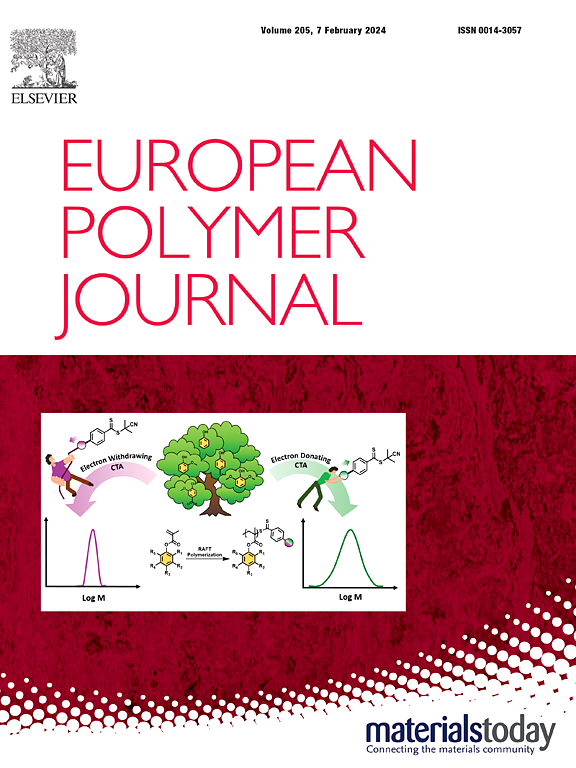Enhancement of toughness and ductility to 1,2,3-triazole Click-cured elastomers via regulation of molecular network and microphase separation
IF 5.8
2区 化学
Q1 POLYMER SCIENCE
引用次数: 0
Abstract
Huisgen-click curing systems of 1,3-dipolar cycloaddition are widely employed in solid propellant binders due to their humidity insensitivity and gentle reaction conditions. However, curing systems of multi-azide and alkyne usually suffer network defects due to uncontrollable reaction equivalents and intramolecular cyclization of multi-azide. Moreover, the formed rigid triazole rings further lower mechanical performance by impeding molecular mobility. Herein, a strategy based on a polymeric curing agent with fixed multi-azide functionality and flexible chain was proposed to cure alkyne terminated binder for regulation of the network structure. Meanwhile, the urethane group near the terminal alkyne was introduced into the binder regulating the spatial distribution of rigid triazoles, forming microphase separation, and improving intermolecular forces. A parabolic relationship between mechanical properties and the molar ratio of alkyne/multi-azide was illustrated with peaking near the stoichiometric ratio, which indicates controllable reaction equivalent and prevention of intramolecular cyclization to optimize the network structure. Furthermore, the toughness and elongation at the break of the cured system respectively increased by 781.25% and 524.24% due to the incorporation of urethane. The introduced urethane group induced microphase separation via aggregating hard segments and improving molecular mobility. This strategy depending on the optimization design of molecular network and microphase separation significantly enhances the mechanical properties of solid propellants and shows promising applications in energetic material systems.

求助全文
约1分钟内获得全文
求助全文
来源期刊

European Polymer Journal
化学-高分子科学
CiteScore
9.90
自引率
10.00%
发文量
691
审稿时长
23 days
期刊介绍:
European Polymer Journal is dedicated to publishing work on fundamental and applied polymer chemistry and macromolecular materials. The journal covers all aspects of polymer synthesis, including polymerization mechanisms and chemical functional transformations, with a focus on novel polymers and the relationships between molecular structure and polymer properties. In addition, we welcome submissions on bio-based or renewable polymers, stimuli-responsive systems and polymer bio-hybrids. European Polymer Journal also publishes research on the biomedical application of polymers, including drug delivery and regenerative medicine. The main scope is covered but not limited to the following core research areas:
Polymer synthesis and functionalization
• Novel synthetic routes for polymerization, functional modification, controlled/living polymerization and precision polymers.
Stimuli-responsive polymers
• Including shape memory and self-healing polymers.
Supramolecular polymers and self-assembly
• Molecular recognition and higher order polymer structures.
Renewable and sustainable polymers
• Bio-based, biodegradable and anti-microbial polymers and polymeric bio-nanocomposites.
Polymers at interfaces and surfaces
• Chemistry and engineering of surfaces with biological relevance, including patterning, antifouling polymers and polymers for membrane applications.
Biomedical applications and nanomedicine
• Polymers for regenerative medicine, drug delivery molecular release and gene therapy
The scope of European Polymer Journal no longer includes Polymer Physics.
 求助内容:
求助内容: 应助结果提醒方式:
应助结果提醒方式:


